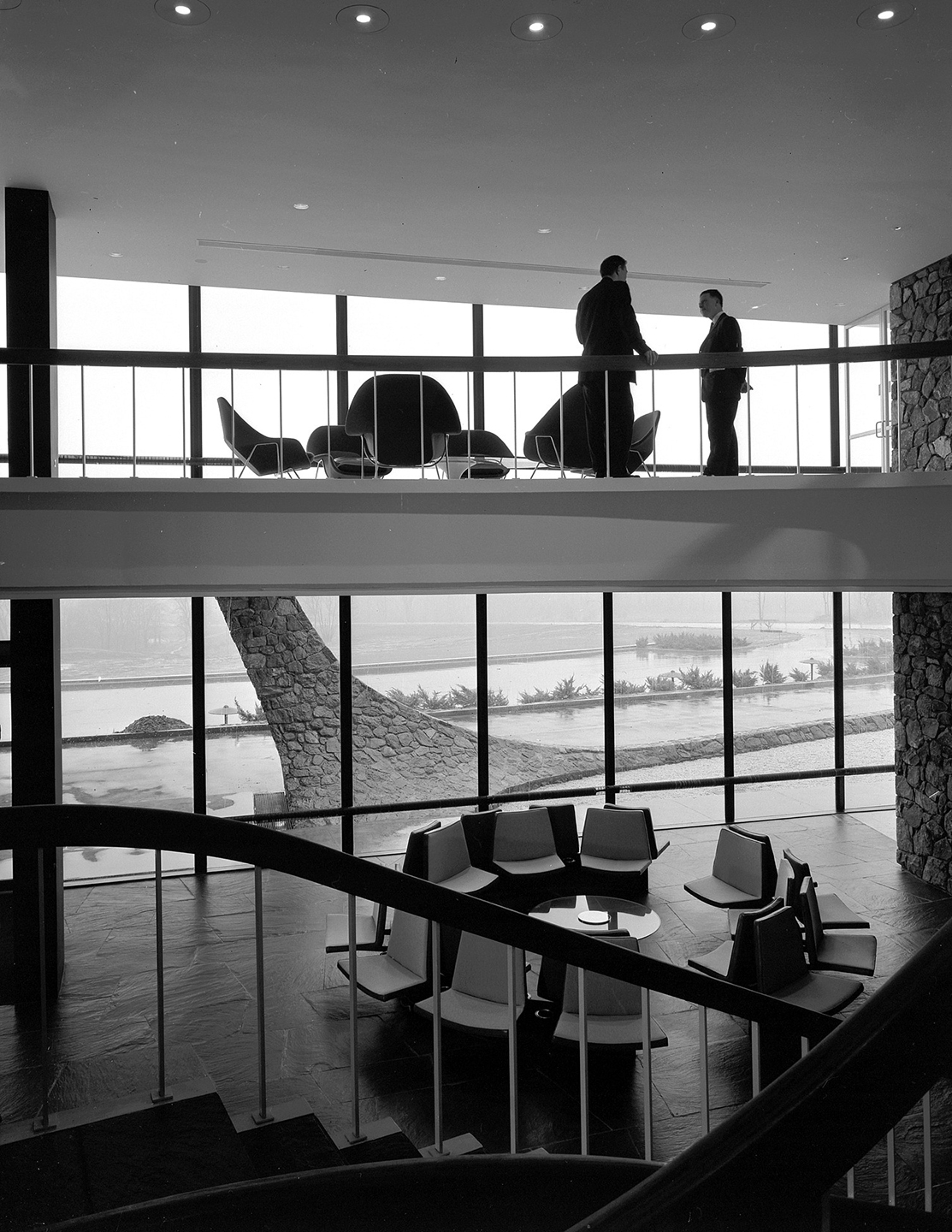When Frank Lloyd Wright hired Pedro E. Guerrero to photograph Taliesin West in 1939, neither knew it would lead to one of the most important relationships in architectural history. Wright was 72 and had already been on the cover of Time for Fallingwater. Guerrero was a 22-year-old art school drop-out. Their first meeting was prompted by Guerrero’s father, a sign painter who vaguely knew Wright from the neighborhood and hoped the architect would offer his son a job. Any job.
A young and brazen Guerrero introduced himself to the famous architect as a ‘photographer’, when, in fact, he hadn’t earned a nickel. “I had the world’s worst portfolio, including a shot of a dead pelican,” Guerrero said later, “But I also had nudes taken on the beach in Malibu. This seemed to capture Wright’s interest.”


As it happened, Wright had just lost a photographer. It was another in a series of coincidences that catapulted Guerrero into modern architectural history: when he’d tried to enroll at Los Angeles’s Art Center School on his 20th birthday, he’d been told it was too late and that all the classes were filled except photography. When Wright and Guerrero met two years later, Wright hired the young photographer on the spot. “Photograph anything and everything,” Wright instructed. The pay was nominal, yet Guerrero was thrilled.
“I had finally found complete happiness – studying shadows, patterns and angles, noting the time at which the sun would give maximum definition to the myriad elements,” Guerrero wrote in his memoir. Cortez could not have been more startled at finding the world of the Aztecs than I was when Taliesin West opened up before me,” Guerrero wrote. “I realized that it was sculpture, a sculpture of redwood and stone rising out of the desert.”
While most Americans know Frank Lloyd Wright, few can name the photographer with whom he worked for the last twenty years of his life. After Wright hired him, Guerrero worked unsupervised and met with Wright to discuss which photos the architect liked and which were to be destroyed. Destruction of a photo would include destruction of its negatives so some of Guerrero’s earliest work has been forever lost. Wright’s ideas about photography were as fierce as his ideas about architecture. He instructed Guerrero to avoid shooting from above or below his natural line of vision and to remove any and all elements which Wright regarded as “unauthorized.” In this regard, Wright was a renegade. He thought nothing of re-arranging furniture in his clients’ houses, or even disposing of it, if it conflicted with his “organic” aesthetic.



















Wright and Guerrero were opposites in many ways. Wright was an considered an elitist; Guerrero was a fun-loving free-spirit with leftist political leanings. Wright was a dandy, very aware of his image, who tipped his hat to a jaunty angle. Guerrero was a bohemian. Wright was a staunch pacifist and urged Guerrero to resist the draft at the outbreak of World War II and just go to jail instead. The young photographer enlisted anyway. Wright surprised him with a gift of $200, a princely sum in 1945.
Guerrero eventually married and settled his family in New Canaan, CT. His neighbors included “The Harvard Five,” Marcel Breuer, Eliot Noyes, Philip Johnson, John M. Johansen, and Landis Gores. “I was living among giants,” said Guerrero. On weekends, he reveled in hosting bohemian gatherings, spreading a Persian carpet on the lawn, hanging Japanese lanterns in the trees, and dancing barefoot to Frank Sinatra. Armed with his Wright portfolio, Guerrero found work in New York almost immediately with his first big assignment photographing a Fifth Avenue apartment designed by Philip Johnson for House and Garden. This led to a twenty-year relationship with the magazine, photographing homes designed by the top architects of the day, from Eero Saarinen to Joseph Salerno.
He also worked for Architectural Forum, Architectural Record, Vogue and other magazines. In 1963, House and Garden asked Guerrero to photograph the home of Alexander “Sandy” Calder. Once again, a chance meeting became a life-changing encounter.
For Wright, form and function were one. For Calder, function followed form. For Nevelson? “There was no functional content,” said Guerrero. “Just spontaneity and mystery.” Nevelson was known for monumental, monochromatic, wooden wall pieces, often constructions of found objects painted black, which made them all the more challenging to photograph. Guerrero worked with Nevelson until her death in 1988. After that, he did not seek a new primary client. He was 72 and wanted to focus on publishing his life’s work.




After his career began to wind down Guerrero returned to his Arizona roots where he lived in Florence, a small town where his great grandfather had once been Justice of the Peace. However is was not a sedentary retirement taking photos and remaining political until the very end – he even formed the ‘National Cocktail Party’ in response to the Tea Party. Guerrero woke up each day – as its been reported – “What miracle will happen today?”
Copy by Stacia Friedman via curbed.com

Frank Lloyd Wright’s Taliesin West in 1939.




